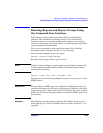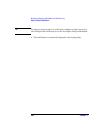
Monitoring, Reporting, Notifications, and the Event Log
Data Protector Notifications
Chapter 7 347
For more information on the Data Protector checking and maintenance
mechanism, refer to “Data Protector Checking and Maintenance
Mechanism” on page 605.
Health Check Failed As a part of the Data Protector checking and
maintenance mechanism, Data Protector will by default once per day
start the Health Check, which starts the omnihealthcheck command
and triggers the notification if the omnihealthcheck command fails. For
more information on the omnihealthcheck command, refer to the
omnihealthcheck man page. The omnihealthcheck command checks:
• whether the Data Protector services (rds, crs, mmd, omnitrig, and
OmniInet) are active
• whether the Media Management database is consistent
• whether at least one backup of the IDB exists
The exit code of the command is 0 (OK) only if all three checks completed
successfully (exit code for every check was 0). Exit values other than 0
indicate that one of the checks failed. For more information on exit codes,
refer to the omnihealthcheck man page.
User Check Failed By default, once per day Data Protector will start
the User Check, which executes the script/command specified as the
<script/command pathname> input parameter. Create the
command/script in the /opt/omni/lbin (HP-UX and Solaris) or
<Data_Protector_home>\bin (Windows) directory of the application
system. Enter the filename here. The notification is triggered if the
script/command exits with the return value other than 0.
For more information on the User Check Failed notification, refer to “The
User Check Failed Notification” on page 606.
End of Session The End of Session notification is triggered when a
Data Protector session for the backup specification(s) specified by the
<Datalist> input parameter ends with the status specified by the
<Session Status> input parameter. The default value is Completed
with Errors.
Notification Send Methods
Notifications can be sent using various methods:
• Email send method


















